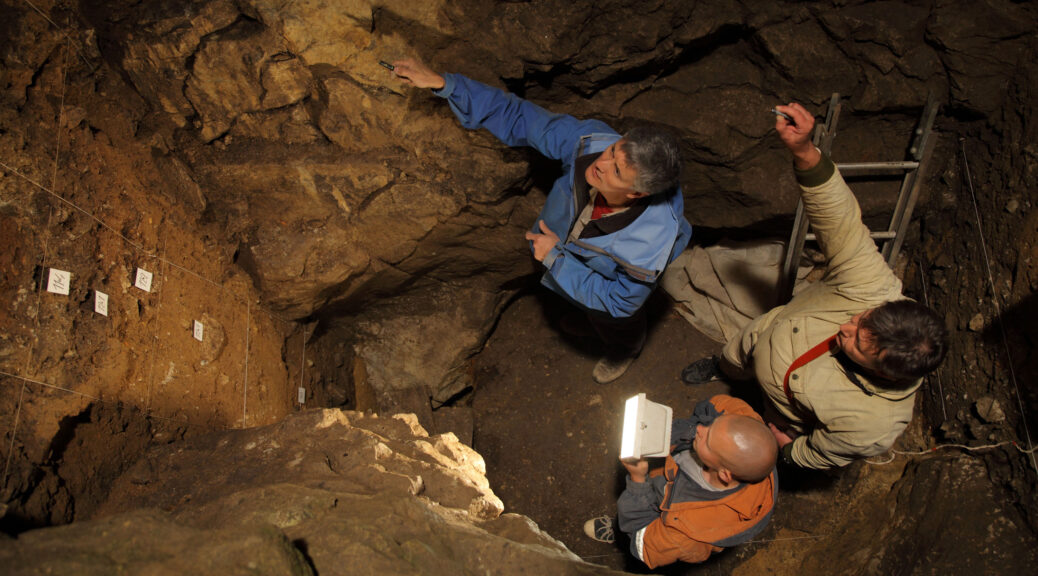90,000-year-old human hybrid found in ancient cave
The idea of free love seems to have started even earlier than in the 1960s. A small bone fragment belonging to an ancient hominin called “Denny” by the team, who had a mother Neanderthal and a dad Denisovan-the two nearest extinct relatives of the living humans today, was discovered in an international team of researchers.

The two races have been known to live on the Eurasian Mixed Continent, Neanderthals in the west of the continent until some 40,000 years ago and Denisovans in the east.
Previous genetic studies of ancient hominin remains have shown that they sometimes interbred, but Denny is the only known example of a first-generation child with equal parts Neanderthal and Denisovan DNA.
The bone fragment was found in 2012 at Denisova Cave in Russia and taken to the Max Planck Institute in Leipzig for genetic analysis, after being identified as a hominin bone due to its protein composition. It is thought that the bone is a fragment of the arm or leg of a young female, who would have been aged around 13 when she died some 90,000 years ago.
“It is striking that we find this Neanderthal/Denisovan child among the handful of ancient individuals whose genomes have been sequenced,” said Prof Svante Pääbo at the Max Planck Institute. “Neanderthals and Denisovans may not have had many opportunities to meet. But when they did, they must have mated frequently – much more so than we previously thought.”
Genetic analysis of the bone indicates that the mother was more closely related to the 55,000-year-old Neanderthal remains found in the Vindija Cave in western Europe than those of another, the so-called Altai Neanderthal, that lived in the Denisova Cave at an earlier date. This means that Neanderthals must have at some point traveled between western and eastern Europe.
The team also found evidence in the genome that the Denisovan father had at least one Neanderthal ancestor further back in his family tree – between 8,000 and 17,000 years before Denny lived.
“An interesting aspect of this genome is that it allows us to learn things about two populations – the Neanderthals from the mother’s side, and the Denisovans from the father’s side,” said Dr. Fabrizio Mafessoni, also from the Max Planck Institute.

Expert comment
Rebecca Wragg Sykes – Archaeologist based at the Université de Bordeaux
It’s hard to overstate the importance of finding Denny. A decade ago we had no clue that her father’s people even existed, much less that children like her existed.
In May 2010 the first Neanderthal genome was published, proving that rather than usurping them, early Homo sapiens made babies with them. But just the month before, samples from a tiny finger bone in Denisova Cave, Siberia revealed an entirely new hominin species.
Now known as D3, this bone was at least 10,000 years younger than Denny. Thanks to ancient DNA, today we’ve identified five Denisovans. But we know more about their history as a species than we do about their technology or even their appearance. Some of them had genes for dark hair, skin, and eyes, but how tall they were or what their faces were like are mysteries.
Despite all samples so far coming from one site, they were far from isolated. Both they and Neanderthals bred with H. sapiens, but in different times and places. Asians and Native Americans have more Neanderthal DNA than Europeans, which might reflect more interaction in that region, or elsewhere in a group which later moved eastwards.
Denisovan blood is even more unevenly distributed: living populations of Oceania and Australia have up to 25 times more than anywhere else. It’s clear we’re seeing only a fraction of the true picture.
Another extinction theory may soon bite the dust
Neanderthals and Denisovans weren’t shy of each other, either. D3’s genes showed interbreeding tens of thousands of years before she died. Denny’s father’s forebears were also making babies with Neanderthals up to 17,000 years earlier. Intriguingly, those far-off encounters were with a Neanderthal lineage different from that of Denny’s mother.
Finding the child of a Neanderthal and a Denisovan should make us sit up and think. Until now, most evidence has pointed to small, localized populations in both species. Added to this, studies mapping the distances that stone tools were moved from their source pointed to relatively limited territories.
On this basis, dominant theories emphasized Neanderthals as socially ‘exclusive’: avoiding outsiders, limited to topographic, cultural and genetic valleys. If that’s true, it’s unlikely we would ever find the result of such an encounter, so Denny is telling us something about these models is wrong.
Populations were likely small, so the startling fact of Denny’s parentage means the other part of the equation must be wrong: Denisovans and Neanderthals must have been quite keen on strangers. But how did populations who were happy to blend stay so distinct genetically? One theory is that mixed children had a tougher time reproducing, but we just don’t know yet.
Why does this matter? One of the most influential ideas about why the Neanderthals disappeared is that H. sapiens had more extensive territories – if we map the distances stone tools were carried, early H. sapiens come out ahead. But finding Denny strongly suggests stone tool mobility can’t be a real measure of sociability. Another extinction theory may soon bite the dust.
